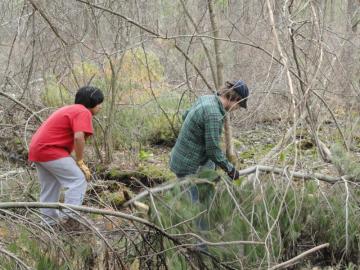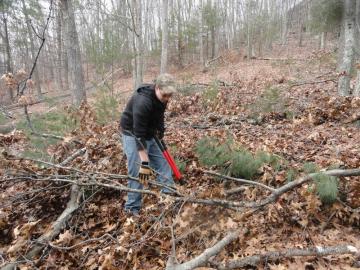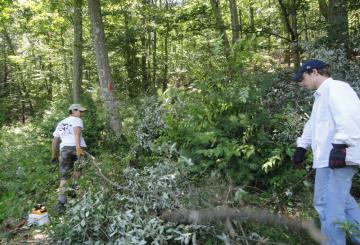Campbell Invasive Conservation Project
The Campbell Conservation Area is a Tolland Conservation site. Sections of the trail were in poor condition with fallen trees and broken limbs after two severe storms. The area surrounding the trail was badly overgrown with invasive plants. The planned “Invasive Species and Range Management” conservation project consisted of removing the downed trees and limbs under the guidelines of the Conservation Commission. The completed work to the trail has ensured the trails will be available for both people and animals in the area to enjoy. The eradication of the invasive plants will slow their expansion while allowing native species to thrive.
The project initially started as a “Range Management” project. It soon included invasive species eradication when the extent to which they had claimed the land was noted. When the project was finished, one-third of a mile of trail was made usable, one and one-third acres of fallen branches or trees were cleared and one and one-half acres of invasive plants were cleared. Safety precautions and best conservation practices were followed throughout the project.
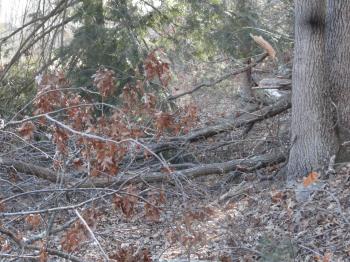
Left picture shows branches blocking the trail. Right picture shows the cleared trail. We would remove any tree limbs and cut down any irreversibly damaged trees that would pose a hazard to hikers.
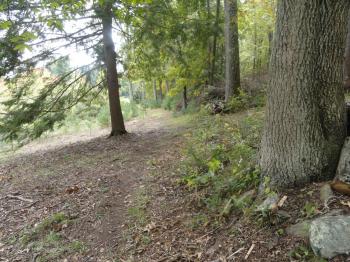
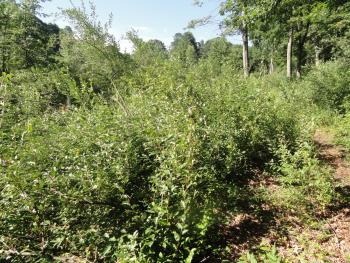
Left picture shows all the invasives. Right picture shows the trail cleared of invasives. By clearing the invasive plant species from the trail, we would impede their spread into the adjacent meadow and make it possible for the native plants of the area to grow and reclaim the project area.
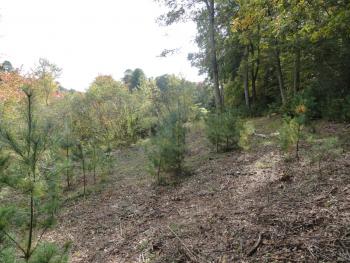
Invasive plants are environmentally destructive, threatening the biodiversity of an area. They out-compete the native plants for nutrients, space, light and water, driving the native species to extinction. Outside of their native environment, they often have no insects or disease to keep their growth in check. They are of little food value to the native wildlife. We removed Autumn Olive, Barberry, Bittersweet, Multi-Flora Rose, and Burning Bush.
